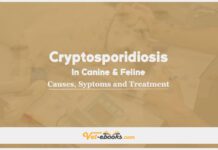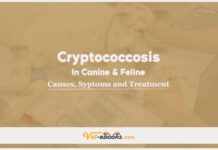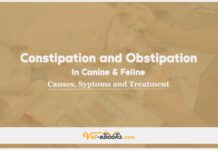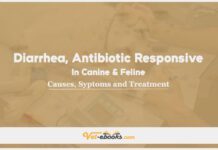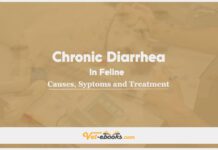Baylisascariasis In Canine and Feline: Causes, Symptoms and Treatment
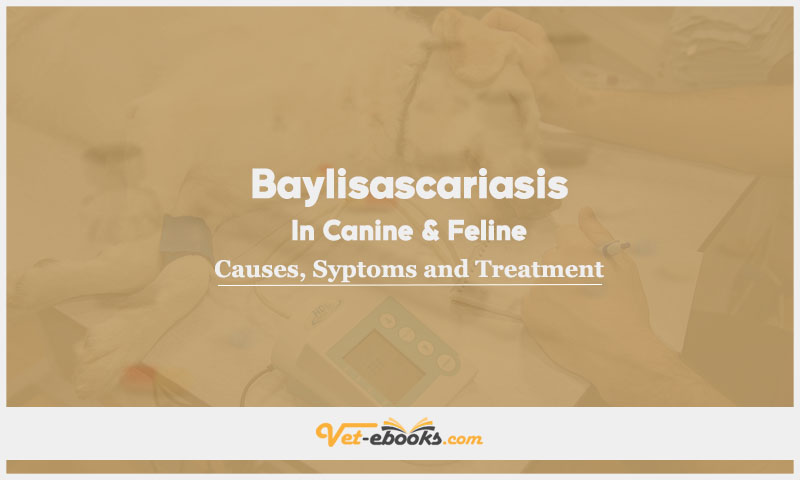
Contents
hide
Overview
Baylisascariasis resulting from the raccoon roundworm, Baylisascaris procyonis.
Causes of Baylisascariasis In Canine and Feline
There are two forms observed in dogs: one is an intestinal infection that typically occurs in adults, and the other is visceral disease caused by the migration of larvae, primarily affecting puppies.
Pathogenesis of Baylisascariasis In Canine and Feline
- Raccoons become infected by consuming eggs or larvae found in the tissues of mammalian hosts acting as intermediaries.
- Dogs contract the infection by consuming either infective eggs or these intermediary hosts. This leads to the development of mature worm infections in the small intestine. Puppies, presumably infected through egg ingestion, experience visceral disease.
- Dogs with intestinal infections generally exhibit no noticeable symptoms, whereas puppies with larval baylisascariasis display signs of neurological disease.
Symptoms (History & Physical Examination) of Baylisascariasis In Canine and Feline
- In the intestinal form, there are no observable signs.
- In the larval form, symptoms may include weakness, ataxia, dysphagia, circling, and recumbency
Diagnosis of Baylisascariasis In Canine and Feline
1- From History and Physical Examination
2- Diagnostic Procedures
- For the intestinal form, diagnosis can be made through a direct fecal smear or fecal flotation.
- In the larval form, an ophthalmoscopic examination may reveal migratory tracks in the retina, and advanced imaging techniques may be employed to visualize lesions in soft tissues or the brain.
CBC/Biochemistry/Urinalysis:
- Typically within normal range; although, there have been reports of elevated eosinophil levels.
Imaging:
- In the larval form, based on observations in human toxocariasis or baylisascariasis cases, abdominal ultrasound or CT scans may reveal small, single or multiple, poorly defined, oval or elongated, low-density lesions in the liver tissue.
- Neurological lesions can be identified through MRI, showing widespread periventricular white matter disease with signs of atrophy.
3- Differential Diagnosis
- Intestinal form: Eggs present in feces can be differentiated from those of either Toxocara or Toxascaris.
- Larval form: Symptoms can resemble those of rabies, canine distemper, congenital neurological defects, or other infectious or inflammatory neurological diseases.
Treatment of Baylisascariasis In Canine and Feline
General
- In cases of the intestinal form, it may be advisable to hospitalize the patient to prevent the spread of eggs in the environment and to guarantee the proper disposal (as a biohazard) or destruction (through incineration) of fecal material and worms following treatment.
- There is no established treatment for the larval form.
- It’s important to inform the pet owner about the potential risk to individuals who may visit areas frequented by raccoons.
Medications:
Intestinal Form:
- Pyrantel pamoate at a dose of 5–10 mg/kg when administered orally.
- Fenbendazole, given at 50 mg/kg every 24 hours orally for 3 days, with a repeat treatment after 2 weeks.
- A combination of Febantel (25–35 mg/kg orally), pyrantel pamoate (5–7 mg/kg orally), and praziquantel (5–7 mg/kg orally), following the label dosage for Drontal Plus®, administered orally every 24 hours for 5 days.
- Ivermectin at 5 μg/kg orally, combined with pyrantel pamoate at 5 mg/kg, following the Heartguard® approved label dosage, given once monthly.
- Milbemycin at a dose of 0.5–0.9 mg/kg orally, in conjunction with lufenuron at 10 mg/kg orally, following the Sentinel® approved label dosage, administered once monthly.
Larval Form:
- Beneficial treatment may include corticosteroids and a prolonged course of albendazole at a dosage of 25–50 mg/kg/day orally for a period of 10 days.
Some Notes:
- It’s important to note that infected puppies in the larval form do not present a zoonotic risk.
- Pet owners should be made aware of the potential danger to individuals who may visit areas frequented by raccoons.
Tip
Do You Want To Increase Your Veterinary Knowledge and Practical Skills?
You Can Now Browse and Download +3000 Books For Veterinary Professionals & Students Online.
Download Veterinary Books

